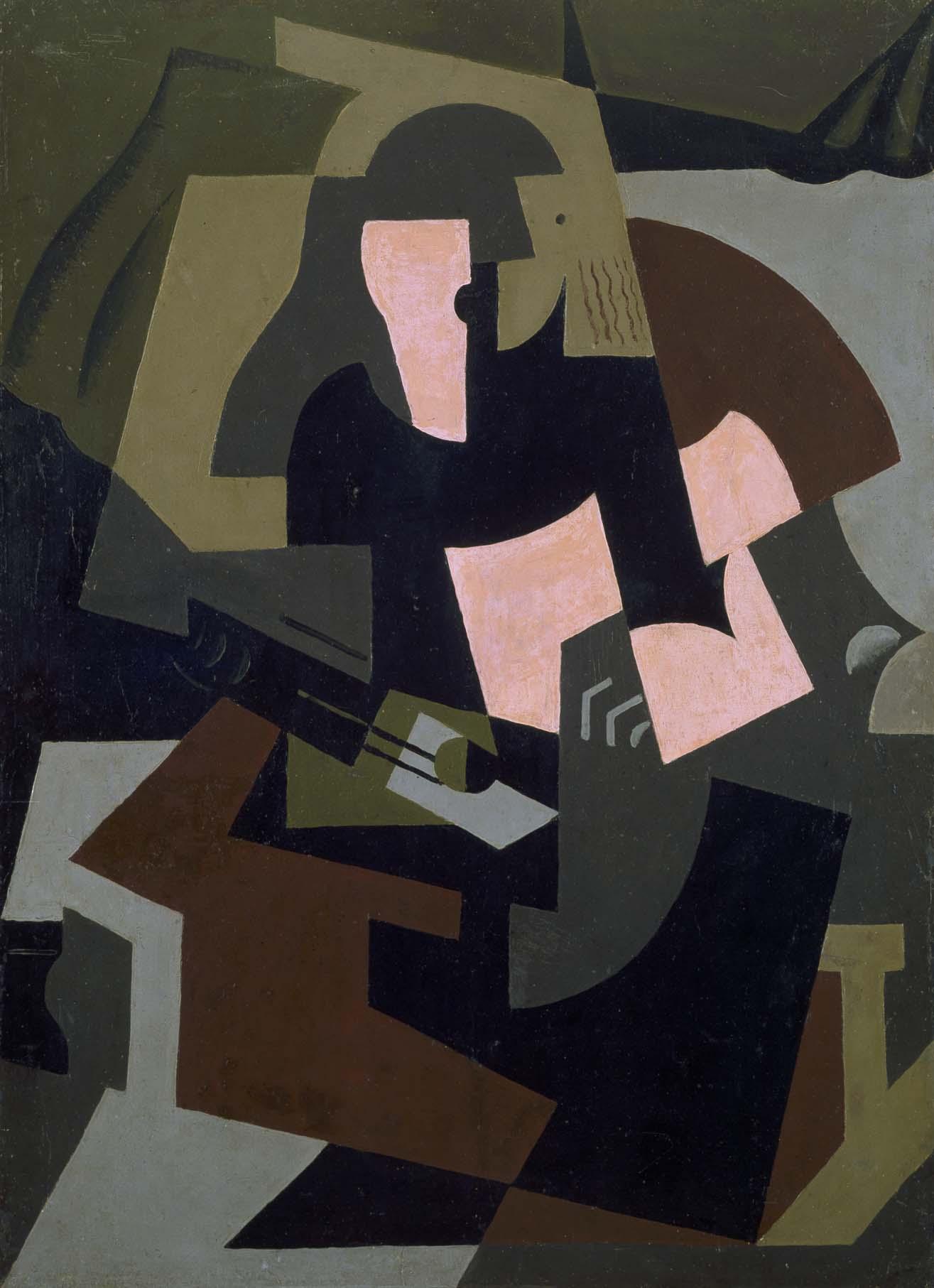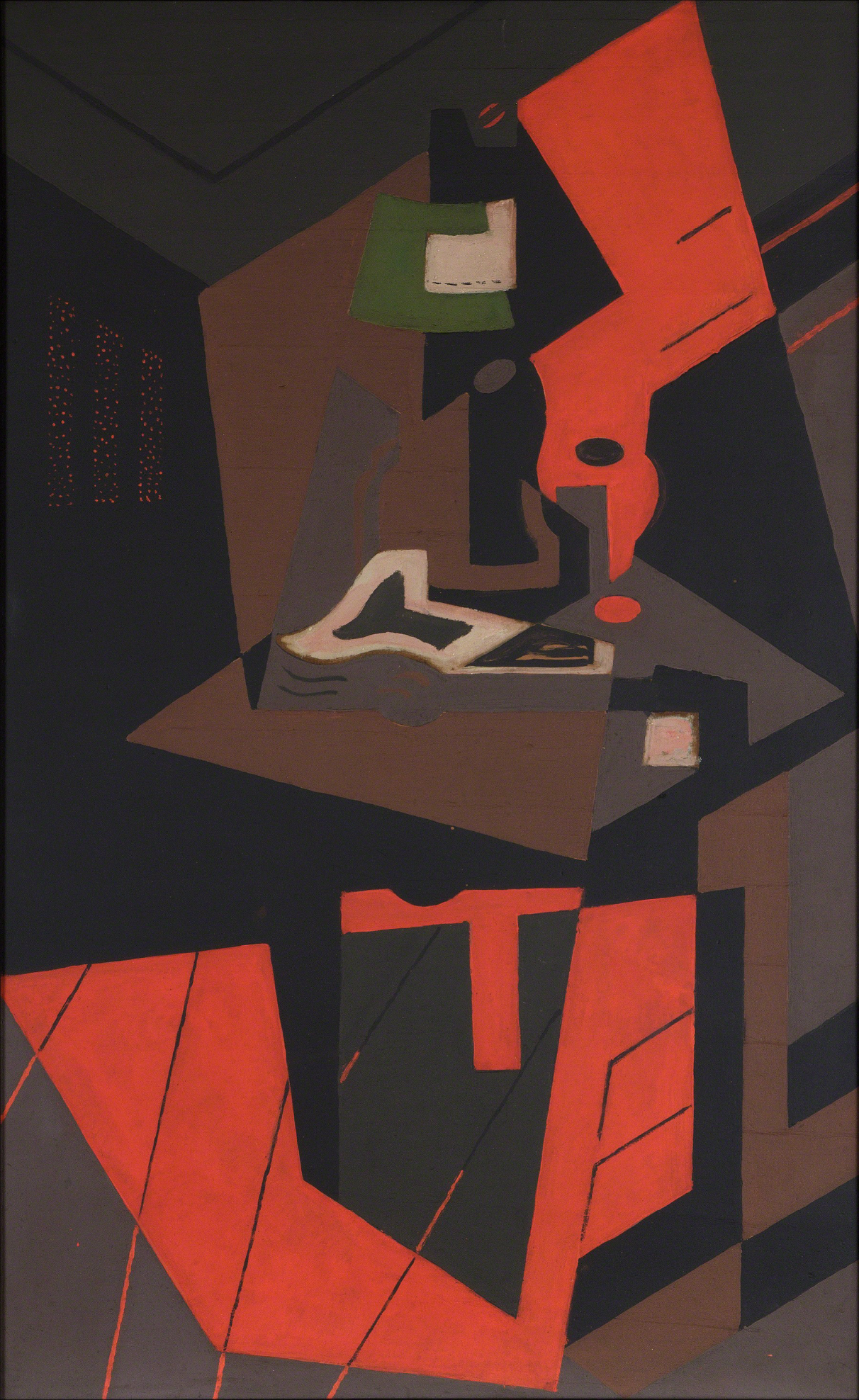María Blanchard was a Spanish painter, known for developing a unique style of Cubism. Blanchard settled in Paris in 1916 on a permanent basis, but it was a different city from the one she had visited before. The First World War had already upended every aspect of life, and a return to order and a reinstatement of classicism and tradition had taken root in art. Cubism was no exception to this trend and was discarding the experimentation that had characterized its origins, with its creations seeking greater legibility and formal clarity. In Paris, Blanchard would encounter some of the major representatives of this new style known as Synthetic Cubism, including Juan Gris and Jean Metzinger, whom she met through Jacques Lipchitz and André Lhote.
This painting corresponds to a period of collaboration and friendship between Blanchard and Juan Gris that saw her, like Gris, revise a classical theme from French pictorial tradition: personage as musical instrument. The artist composed the figure through interweaving, in two dimensions, geometric planes colored with no apparent connection. The synthesis she would arrive at is extreme, with neither volume nor perspective, just precise details such as the guitar strings, an eye, and three fingers to help recognize the figure represented.
Dear DailyArt users, please help us develop new DailyArt apps; we need to create them as we won't be able to operate much longer on the app you are using now. Every cent counts for us! Learn more about our crowdfunding.
P.S. Did you know that Cubism had many faces? See how it changed during the 20th century!


 María Blanchard
María Blanchard